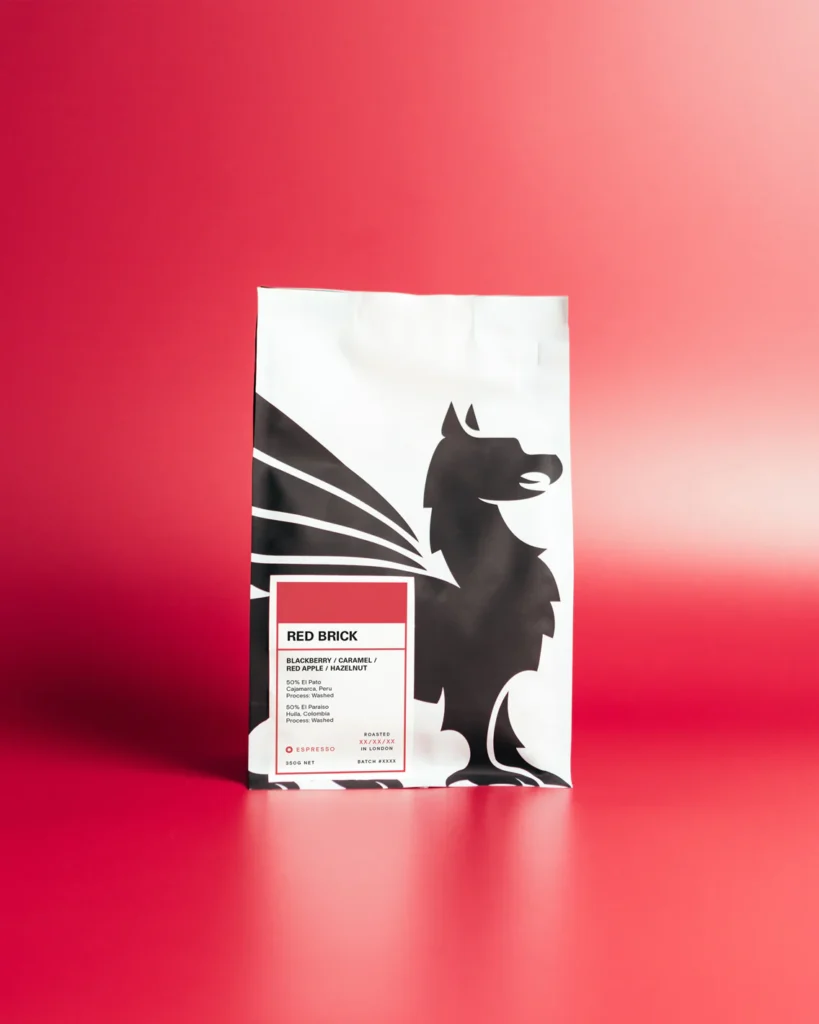Now that our Central American coffees are coming into the roastery, it’s time to put those fresh crop beans into Red Brick and enjoy the flavours of a new harvest!
This summer we’ve combined two old favourites with a sure-to-be new favourite. Carrying on the relationship we have established over many years with two sources; the Ventura family and the team behind the Puente Tarrazu mill, we’re blending Costa Rica and Guatemala together to produce a sweet, balanced espresso with a vibrant bright note and flavours of chocolate and nuts.

The main component of the coffee, accounting for 50% of the blend, is the white honey (or washed) mix of Caturra and Catuai varieties from the Puente Tarrazu micro mill. We have been visiting and buying coffee from Rodolfo Rivera and his associates since 2013, both for our espresso and our filter coffees. Located just outside Santa Cruz de Leon Cortez, Rodolfo runs the mill in collaboration with six other coffee producers in the area, and they process their own coffees as well as some coffees from neighbouring producers who don’t have their own facilities.

On my first visit, they had the wet mill up and running and were planning the construction of a dry mill. The wet mill has now been operating for twelve years and the dry mill for four, and in the busiest season friends and family add to the permanent workforce in order to get everything hand sorted and perfectly prepared for export. Their dedication and professionalism is always impressive, and it’s been a pleasure to see them grow over the years.

The other two components of this Red Brick comes from one family, but two different farms in two different regions.
The Rabanales name will be familiar to most of our regular customers as after three years of visiting and buying coffee from the Ventura family, this farm has fast become a staple in our summer and autumn selection. This time their semi-washed Caturra represents 25% of the blend. The Venturas have been growing coffee at Rabanales in Fraijanes since 1894 when Don Gregorio Zamora established the first coffee trees on the land.
Each generation has made their mark, the first built the mill, the second created a network of roads, the third extended the planting, the fourth technified the farm’s processes, and the fifth generation is now specialising. They focus on producing higher qualities and new varieties to remain competitive and sustainable.

Providing jobs for the local community and preserving sections of the land as a natural forest is also part of their philosophy. With in-depth soil and foliage analysis and experimental pruning practices, combined with control over their own milling, the Venturas, led by Rafael and Maria Elena, are modernising traditional methods and keeping their family history alive.
A lot of experimentation is going on at Rabanales too. On what used to be strawberry fields, they have around 14 varieties that are being tested for compatibility with and responsiveness to the soil, pruning, shade etc, in order to identify the most suitable plants of the best quality. They have been reading up on old techniques for planting, digging holes and maintaining the farm systems, and it has been working really well.

Located just on the outskirts of Guatemala City, it’s a very old family farm that’s up against unique challenges as urbanisation creeps ever closer. On one of my first visits, I remember sitting on the porch at the farm house and hearing the heavy traffic from highways in the distance. It really brings home the severity of the urban sprawl eating its way through the rich, fertile farmland which traditionally has been reserved for coffee production.

Rafael and Maria Elena have stood their ground against the encroaching housing developments as best they’ve been able. However, this year they decided to take advantage of the situation by selling off a small parcel of land on the outskirts of their farm, investing the money in a new mill and cupping lab, giving them even better control over their quality.
Another way they’ve started to manage the pressures of the city is by establishing coffee production in other areas.


The third and last 25% component of your new Red Brick is a washed mix of Bourbon and Caturra from their new El Durazno farm in Jalapa, Nuevo Oriente. When they asked if I’d be interested in trying the coffee from this plot a couple of hours drive east from Rabanales, I was very keen to see what they had on offer. Rodolfo and Maria decided to buy the land in 2012, to have a place to ensure the family’s legacy in coffee would be safe for future generations. El Durazno means ”˜the peach’, and it may be my imagination but I think I can taste a bit of stonefruit in the end result.
Learning a new landscape, new soil and new microclimate has been very rewarding and educational for the Venturas, and they have been excited to share the fruits (pun intended) of their labour. This harvest was their first full year of production, and I was smitten with the fruit forward profile of the cup, which contrasts and complements the soft chocolate notes of the Rabanales very well.
BUY SOME HERE

Red Brick
£10.50tasting notes




